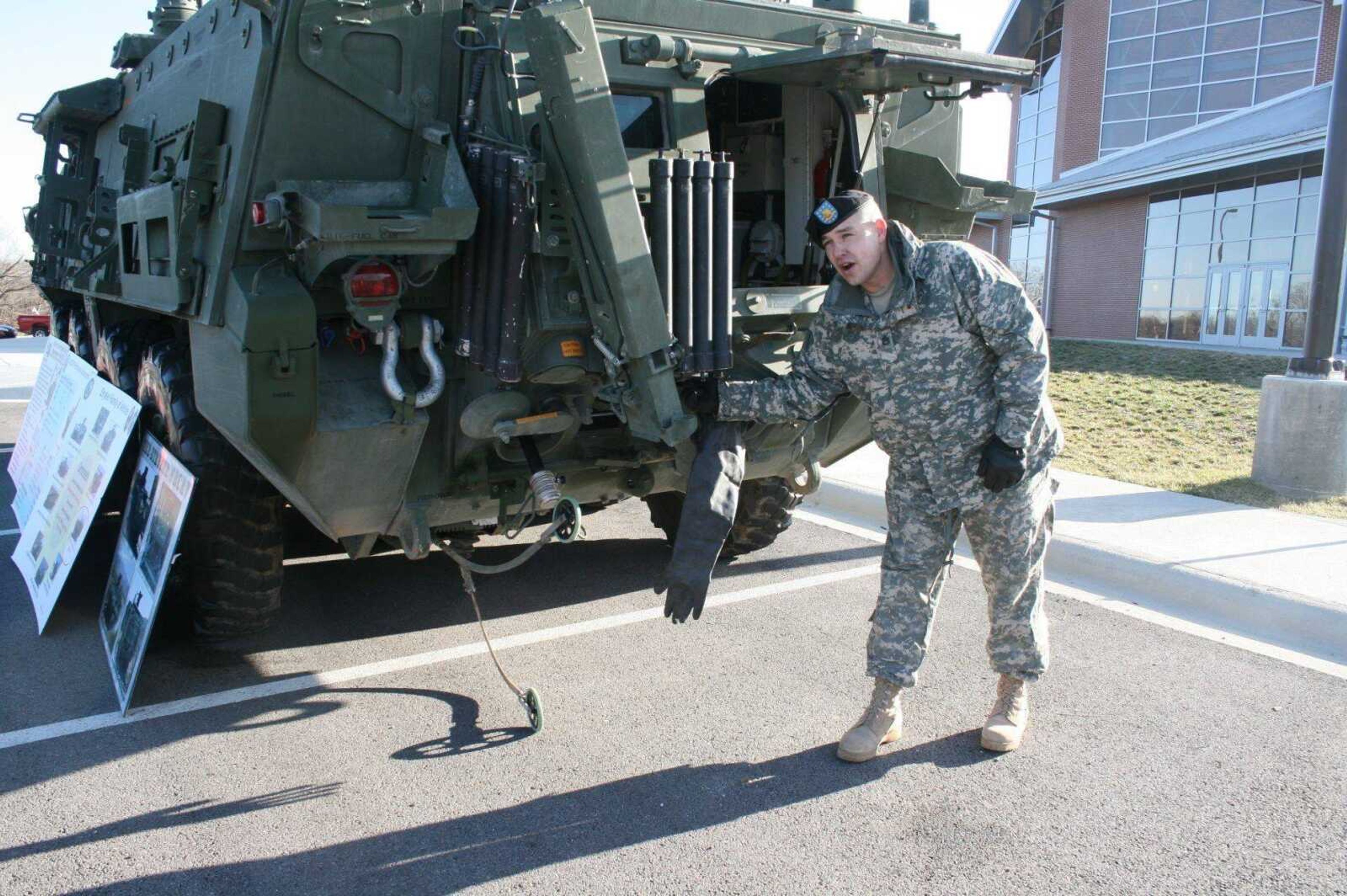Army unveils new name, sniffer vehicle for WMD school
FORT LEONARD WOOD, Mo. -- The U.S. Army's school for fighting chemical threats unveiled a new name Friday to reflect a broader focus on weapons of mass destruction. The U.S. Army Chemical School formally changed its name to the Chemical, Biological, Radiological and Nuclear School...
FORT LEONARD WOOD, Mo. -- The U.S. Army's school for fighting chemical threats unveiled a new name Friday to reflect a broader focus on weapons of mass destruction.
The U.S. Army Chemical School formally changed its name to the Chemical, Biological, Radiological and Nuclear School.
Brig. Gen. Thomas Spoehr, chief of the Army Chemical Corps, acknowledged that "the name is a mouthful" but said it reflects the increased importance of combating WMDs and the fact the school has trained in those areas for years.
"The Chief of Staff of the Army, General George Casey, recently stated that the threat from WMD is perhaps the most troublesome issue facing out Army," Spoehr said at a ceremony for the new name.
"In response to changing threats, we have deliberately sought and achieved a balance among the areas of chemical, biological, radiological and nuclear training in our courses," Spoehr said.
The school remains based at this sprawling post in the Ozarks, about 130 miles southwest of St. Louis, that is also home to the Army's engineering and military police schools.
Spoehr also showed off the school's new $6.5 million sniffer tank, a Stryker armored vehicle specially adapted for WMD reconnaissance that the general described as a huge advance over its predecessor, Fox.
The Army last month authorized the purchase of 95 of the Stryker nuclear, biological and chemical reconnaissance vehicles after deploying about 10 in Iraq.
Spoehr said the Stryker is an advance from the older Fox in several ways, including packing in a lot more computer power and a university-quality spectrometer able to identify tens of thousands of chemical and biological agents.
It also has remote sensors that can detect some threats as far as 3.1 miles away, instead of having to drive over them, as the Fox does.
Robotic sensors on the Stryker collect samples constantly as the Stryker rolls, while the Fox needs to stop to make checks, Major Rob Barnhill said.
A crew of four run the Stryker, including the driver, a commander who is also the gunner thanks to a joystick-controlled 50-caliber machine-gun, and two specialists to run the sensing equipment.
Any findings can be communicated automatically to ground commanders through a digital battlefield information system, relaying the type of threat, exact location, time and weather information.
The school expects to get between five and seven of the vehicles for training, both for military missions abroad and homeland security efforts in the U.S. Besides active service soldiers, the school also trains specialists for the National Guard and Army reserves.
Connect with the Southeast Missourian Newsroom:
For corrections to this story or other insights for the editor, click here. To submit a letter to the editor, click here. To learn about the Southeast Missourian’s AI Policy, click here.








